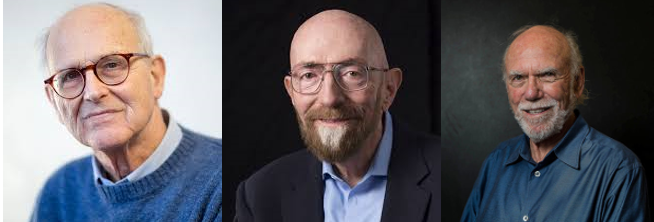INK157: Rebirths and new starts of the scientific method
[original article by Alessandro Martin]
Have you ever asked yourself the exact meaning of the word “science”? What is the true incentive to discovery? In this article we will try to extract the meaning of this term, frequently used but difficult to be fully understood and applied in ordinary life. We will briefly travel within the scientific method and within ourselves, starting from the roots of both. A cycle of discoveries, hypotheses, disproofs, theories and new starts which all lead to the same origin: knowledge. Science is awareness of what is occurring, obtained through the research and the application of strict proceedings which aim to validate the originally formulated hypothesis. This discipline is characterised by a long history full of innovations which gave birth to thoughts linked to philosophy, technology and even religion. Despite the interest of the humankind for the misteries of natural events has to be searched in the first generations of our species, the roots of science must be identified within the Ancient Greece, where the term “episteme” stood for the knowledge of a fact based on certain foundations and had also a holy connotation. In order to understand the origins of the modern word, we have to move to the Roman culture, by which the latin term “scientia” has been forged. “Scientia” meant “knowledge”. The division between science and religion came with the period of the “enlightment”, which put an end to the holy character of science, leaving space to concrete disciplines based on certain and experimentally verifiable results. A succession of philosophical reflexions on the best method to adopt for the empirical knowledge characterised the modern science until the 17th century. This century gave birth to the modern scientific method, thanks to Galileo Galilei. The scientific method is an experimental method through which science, and also us in our ordinary life, reaches an objective knowledge of reality. The cycle of scientific method has both its beginning and its end in observation. How many times, while observing a phenomenon, have we wondered about its nature? The observation is a property that we own since we are children and since the first years of our life we use an “innate scientific method” to learn and comprehend what surrounds us: we are speaking of the first phases of learning. We can make a practical example, although rather simplistic: the reaction of a mother to the crying of her child. This passage is the starting point, since it pushes the scientist, or in this case the baby, to make questions to him/herself, but at the same time this is the end of the process because it allows to verify that the law or the obtained reaction, is being respected. This first point of the entire cycle also includes the collection of characteristics and observable peculiarities in the phenomenon. The enquire stimulates the birth of an hypothesis that can realistically explain what has been observed; then a concrete verification is performed through empirical ways of what has been hypothesised. The experiment is one of the hardest passages to perform, in which the environment and the phenomenon are disrupted and mutated to obstacle to the truthfulness of the hypothesis. Variations are often minimal, but significative enough to obtain precise responses. In fact, it has been demonstrated that, although a newborn cannot have already learned the notions of a proper method, he/she will modulate the crying before associating it to the different reactions of the mother. At this point, the raw data, which for the newborn simply corresponds to cause-consequence connections, is collected, ordered and analysed in order to obtain some results and conclusions. At the end, the cycle faces a fundamental crossroads. If what has been obtained from the entire process does not confirm the initial hypothesis, a return to the origin of the sequence is needed. A new start, with new observations and new hypotheses is the future of the event taken into consideration. If the results confirm the initial hypothesis, further experiments are done following the suggestions of the entire scientific community (in the case of the newborn baby this process is guided by the instinct) and in case of positive outcome, we have a scientific theory or a proved behaviour. This constant comparison between science and first phases of development allows us to comprehend how the scientific matter is an innate variable which belongs to us since our origin, it is part of our nature. This passage succession has been the engine of science for more than four hundred years and has been used by scientists like Isaac Newton. Everyone, in his field, can apply his own scientific method because it belongs to us since our origin. The same scientific method, however, was overturned by Albert Einstein who introduced the general relativity. The innovative approach of Albert Einstein was not based on the empirical observation, but on mathemathical and purely theorethical reasonings. The heaviest crisis, however, came with the critics of the pilosopher and epistemologist Karl Popper, who denounced the inductive and positive approach, explaining why a scientific method had to have a deductive matrix and proposing a new method based on the falsifiability criteria. According to Popper, in fact, the experiments will never cover all the possible cases and thus will not be able to verify the examinated theory and one single experiment that denies the hypothesis is enough to make it untrue.
It is thus clear how the cyclicity of the scientific method is characteristic also of his own history, characterised by an alternation of confutations, discussions and new starts that gave life to divergent but innovative paths. The origin of science is still the product of a cycle and maybe, still today, we are within a cycle that will have consequences on the future.



